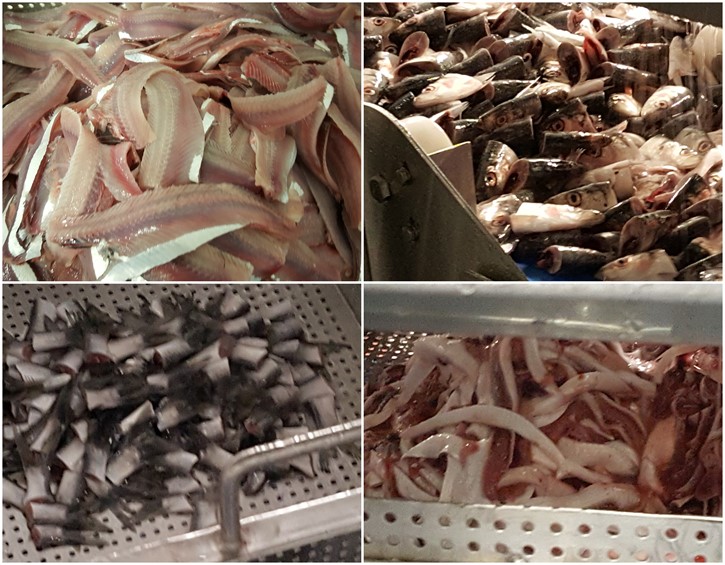Grand-opening of new filleting line which sorts side-streams
On the 5th of March, WaSeaBi came one step closer to enabling the creation of valuable ingredients from seafood side-streams with the grand-opening of a new filleting line which has been rebuilt so that side-streams can be sorted in different fractions.
Instead of ending up in one bin, which currently is the common practice when filleting pelagic fish, the new filleting line sorts side-streams so that heads, guts, back-bones and tails end up in separate containers.
“By sorting the side-streams, we avoid that the clean parts of the fish such as heads and back-bones get contaminated with blood and enzymes from the intestines which cause rapid degradation of the side-streams, and thereby hinder the development of high-value ingredients”, Ingrid Undeland, professor in at the Food and Nutrition Science division at Chalmers University of Technology, explains.
Ingrid Undeland as well as Martin Kuhlin from Scandic Pelagic Ellös AB had the pleasure of inaugurating the new filleting line by cutting the tape. Herring, which is the core business of Scandic Pelagic Ellös, was used in the “test drive” of the filleting line, and it evidently meet the expectation of being able to sort side-streams in different fractions.
The new filleting line has been set up on the premises of Scandic Pelagic Ellös AB in Sweden. However, for months the partners have been working on reaching to this point. First, a procurement process took place last year, which resulted in the purchase of a second-hand filleting machine which was rebuilt to enable sorting of side-streams. After the purchase, construction work started at Scandic Pelagic Ellös in order to accommodate the filleting line in a food grade area.
The next step will now be to test the filleting line on a regular basis and evaluate the performance with respect to how “clean” the sorted parts get, what sizes they have, what is their crude composition, and how stable they are e.g. towards lipid oxidation and microbial growth.

Photo: Back-bone, heads, tails and guts
The testing of the new filleting line will be conducted by Scandic Pelagic Ellös with the assistance of Chalmers University of Technology, who will perform all the analyses.
With this new filleting line the WaSeaBi partners will be able to determine whether it is possible to efficiently sort the solid side-streams from herring in several clean fractions and get deep knowledge about the properties of these new kinds of herring raw materials for further value adding. Already at this stage, a great step forward has been taken as Scandic Pelagic Ellös now have five different types of herring raw materials available rather than just one - the fillet.